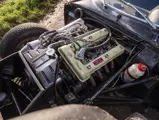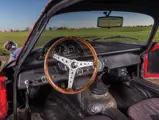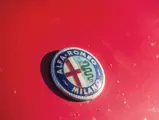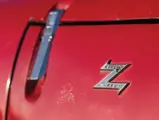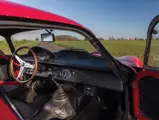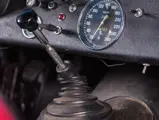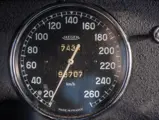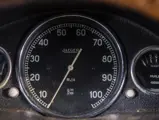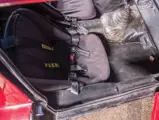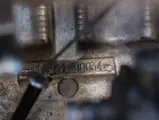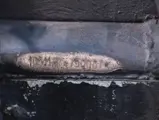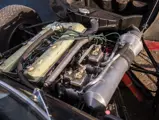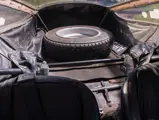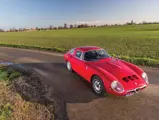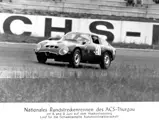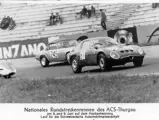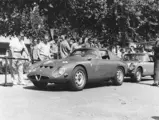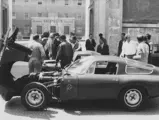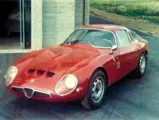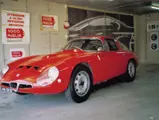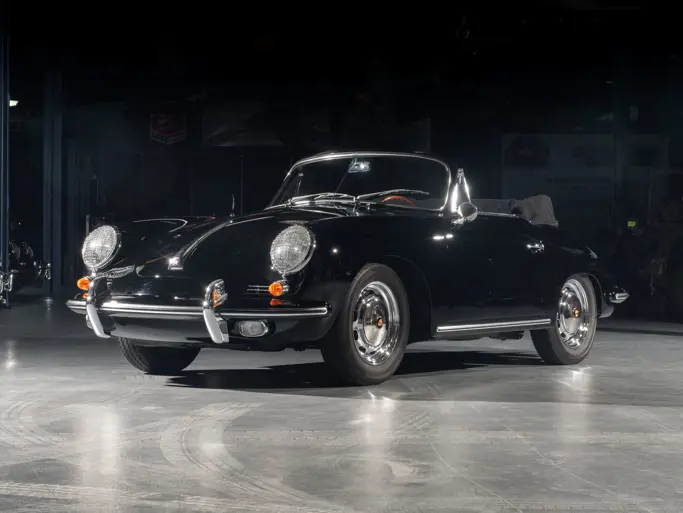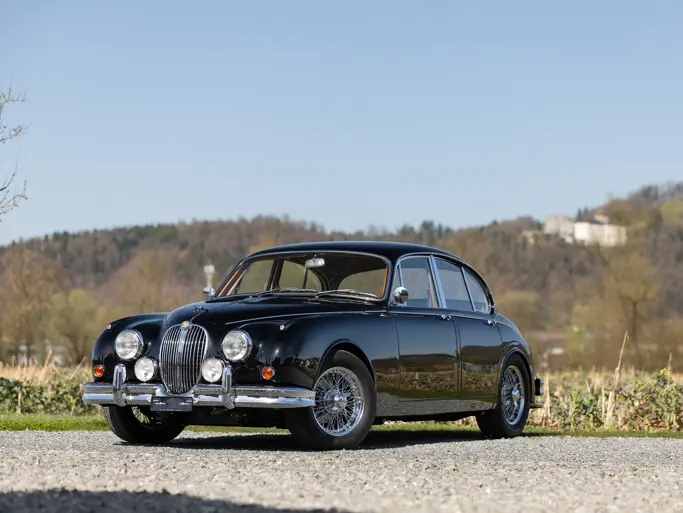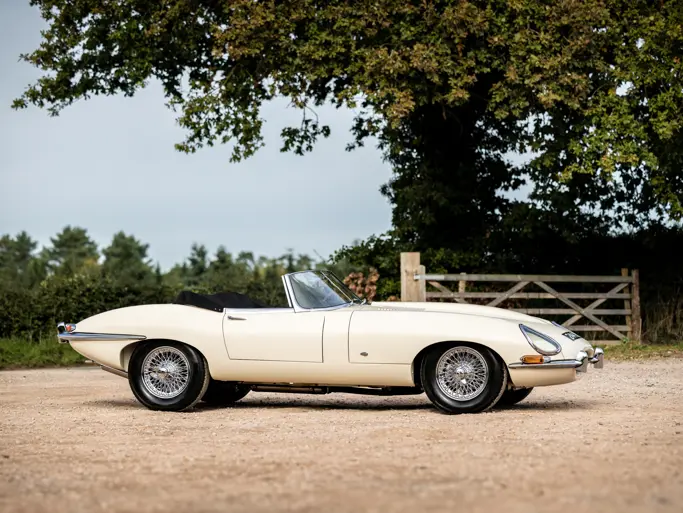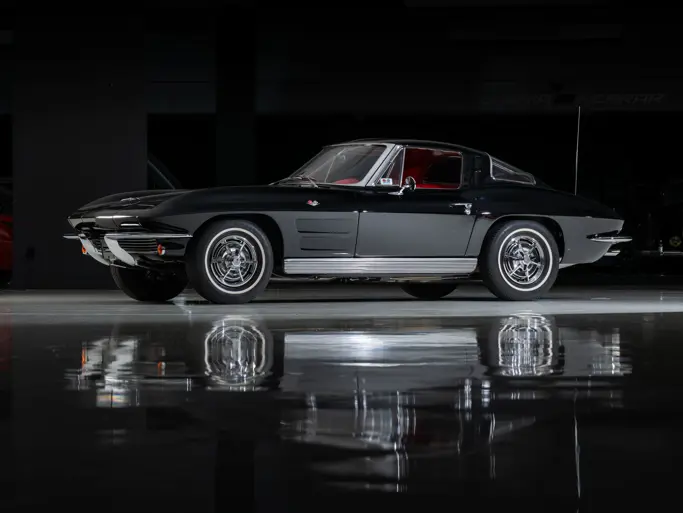Paris 2016
1965 Alfa Romeo Giulia Tubolare Zagato
{{lr.item.text}}
€950,000 - €1,200,000 EUR | Not Sold
 | Paris, France
| Paris, France
{{internetCurrentBid}}
{{internetTimeLeft}}

- Landmark Alfa Romeo model with stunning Zagato coachwork
- Raced in period, including the Nürburgring 1,000 KM
- Eligible for historic motorsport events, including the Tour Auto and Le Mans Classic
- Modèle important dans l'histoire Alfa Romeo, étonnante carrosserie Zagato
- Riche palmarès en course, dont une participation aux 1000 Km du Nürburgring
- Éligible aux évènements sportifs historiques, y compris le Tour Auto et Le Mans Classic
150 bhp, 1,570 cc DOHC inline four-cylinder engine, five-speed manual transmission, front and rear independent coil-spring suspension, and four-wheel hydraulic disc brakes. Wheelbase: 2,200 mm
Moteur quatre-cylindres en ligne, 1 570 cm3, 2 ACT, 150 ch, transmission manuelle cinq rapports, suspension avant et arrière indépendante avec ressorts hélicoïdaux, freins hydrauliques à disques sur les quatre roues. Empattement 2 200 mm.
ALFA ROMEO’S GTO BEATER
The 105 Series Giulia of Alfa Romeo was introduced at Monza in 1962. The super strong chassis was an evolutionary design, based on the previous Giulietta and 101 Series, however, the 105 introduced major suspension upgrades and, for the first time, disc brakes.
A competition Giulia was introduced at the 1963 FISA Monza Cup. Named for its tubular space-frame chassis and striking aluminium Zagato coachwork, the Giulia TZ (Tubolare Zagato) took the first four places in its class. In 1964, the TZ was FIA homologated (100 units were needed for homologation to the Gran Turismo category) and immediately began logging its impressive string of race wins in Europe and North America. It is believed that, in the end, 100 or so examples were built between 1963 and 1967.
A purpose-built competition GT, the TZ (often called the TZ-1 to distinguish it from the later TZ-2) development was guided by Autodelta, led by ex-Ferrari engineer Carlo Chiti. The TZ shared the same basic 1,570–cubic centimetre engine with the Sprint Speciale and Spider Veloce (later, with the addition of a twin-plug cylinder head). The transmission had heavy-duty, close-ratio gears and a very quick short-throw lever. Reduced bonnet height was achieved by tilting the engine in the frame. The front suspension was a similar design to the standard Giulia, while the rear was an elaborate independent competition type to reduce unsprung weight.
TZs competed in the most important races, were driven by some of the best drivers at the time, and competed against the likes of Ferrari 250 GTOs, Shelby Cobras, Maserati Birdcages, and Porsche 904s. At the 1964 Targa Florio alone, Porsche took the first two spots with their 904s, while Alfa Romeo’s TZs finished in 3rd and 4th with TZs. Ferrari, with their 250 GTOs, took 5th, 9th, 10th, and 12th. Class wins at Sebring, Le Mans, and the Nürburgring that year also solidified the TZ’s position in the annals of motorsport.
A SEASONED CAMPAIGNER
The TZ offered here was built in August 1963 and delivered to its first owner, Karl Foitek, in Switzerland. Foitek was a four-time Swiss Champion (racing and sports cars) with a passion for fast Italian cars. Chassis number 750087 was later sold to Peter Schetty, who was most famous for racing Shelby Mustangs with Scuderia Filipinetti and who also spent several years with Ferrari in the late 1960s and early 1970s. Perhaps unsurprisingly, Schetty traded chassis number 750087 to Uli Maurer in part exchange for a Shelby GT350.
Maurer owned this car for just over a year before selling it to James Bernard Fortmann of team Bardahl Switzerland. Fortmann would send the car immediately to Autodelta for preparation, ahead of a busy summer of racing. In just a few months, this car would finish 5th in Class (Prototype 1600) at the 1968 Nürburgring 1,000 KM, a race where non-finishers included the Jo Siffert Porsche 908 and the David Skailes Ferrari 250 LM.
It would then race at the Hockenheim Ring in the ACS Swiss Championship before competing in the Grand Prix of Mugello. Unfortunately, an accident in practice damaged the rear of the car, and it was unable to start the race. Fortmann once again sent chassis number 750087 to Autodelta for repairs following its successful summer campaign. The car then passed through a number of Swiss owners, during which time the original engine was removed. In 1983, this car passed into the ownership of Ernst Hugentobler, who would keep the TZ for 17 years, before it was purchased by J. Pas, its first non-Swiss owner. Mr Pas has attended a number of clubs and rallies in the car throughout Europe and has sourced an original TZ engine (from chassis number 750066).
With just two owners in the last 32 years, chassis number 750087 is a well-cared-for example of an incredibly rare Alfa Romeo icon. Eligible for nearly every prestigious event around the globe for cars of this era, from the Monterey Historics to the Tour Auto and Le Mans Classic, this Alfa Romeo TZ will be both a welcome entrant and a thrill to drive.
L'Alfa Romeo qui a vaincu la GTO
L'Alfa Romeo Giulia Série 105 a été présentée à Monza en 1962. Sa structure extrêmement rigide était une évolution de celle de la Giulietta et de la Série 101, mais la 105 bénéficiait de modifications de suspension majeures et, pour la première fois, de freins à disques.
Une Giulia de compétition faisait son apparition à la Monza Cup FISA 1963. Tenant son nom de son châssis tubulaire et de sa superbe carrosserie en aluminium signée Zagato, la Giulia TZ (Tubolare Zagato) décrochait les quatre premières places de sa catégorie. En 1964, la TZ était homologuée FIA (elle devait être produite à 100 exemplaires au moins pour la catégorie Grand Tourisme) et commençait à engranger une impressionnante série de victoires, en Europe et en Amérique du Nord. Sur le plan de la production, une centaine d'exemplaires auraient été fabriqués entre 1963 et 1967.
La TZ (souvent désignée TZ1 pour la différencier de la TZ2 ultérieure) étant conçue spécifiquement pour la course, sa mise au point était confiée à Autodelta, structure sportive dirigée par Carlo Chitti, ancien ingénieur Ferrari. La TZ reprenait le moteur 1 570 cm3 des Sprint Speciale et Spider Veloce (par la suite avec une culasse double allumage). La transmission comportait des rapports rapprochés et renforcés, commandés par un petit levier à course courte. Le moteur était incliné dans le châssis, ce qui permettait de limiter la hauteur du capot. La suspension avant adoptait une configuration proche de celle de la Giulia de série, alors que l'on trouvait à l'arrière une suspension indépendante type compétition, de façon à réduire le poids non suspendu.
Les TZ ont participé aux épreuves les plus importantes entre les mains des meilleurs pilotes de l'époque, et se sont retrouvées en face de machines comme les Ferrari 250 GTO, Shelby Cobra, Maserati Birdcage et Porsche 904. Par exemple, à la Targa Florio 1964, Porsche s'est emparé des deux premières places avec ses 904, les Alfa Romeo TZ s'adjugeant la troisième et la quatrième places. Les Ferrari GTO ont dû se contenter des cinquième, neuvième, dixième et douzième places. La même année, des victoires de catégorie à Sebring, au Mans et au Nürburgring confortaient la place de la TZ dans les annales du sport automobile.
Une saison de courses
La TZ proposée ici est sortie d'usine en août 1963 et a été livrée à son premier propriétaire, Karl Foitek, en Suisse. Foitek, qui avait remporté quatre fois le titre de Champion de Suisse (course et sport) nourrissait une passion pour les voitures italiennes. Le châssis n° 750087 était ensuite vendu à Peter Schetty, plus connu pour les Mustang Shelby qu'il pilotait pour la Scuderia Filipinetti, et qui avait passé plusieurs années chez Ferrari à la fin des années 1960 et au début des années 1970. Avec une certaine logique, Schetty échangeait ensuite avec Uli Maurer ce châssis n° 750087 contre une Shelby GT 350.
Maurer conservait la voiture à peine plus d'un an avant de la céder à James Bernard Fortmann, du team Bardahl Switzerland. Fortmann envoyait immédiatement la voiture chez Autodelta pour une préparation spéciale, en vue d'un été de courses. En quelques mois, cette voiture terminait cinquième de sa catégorie (prototypes moins de 1600) aux 1000 Km du Nürburgring, une épreuve où les abandons comptaient la Porsche 908 de Jo Siffert et la Ferrari 250 LM de David Skailes.
La voiture prenait ensuite part à la manche de Hockenheim du Championnat de Suisse ACS, avant d'être engagée au Grand Prix de Mugello. Malheureusement, un accident aux essais endommageait l'arrière de la voiture, ce qui l'empêchait de prendre le départ. Fortmann envoyait une fois de plus la TZ chez Autodelta pour qu'elle soit réparée à la suite de sa belle saison estivale. Elle passait ensuite entre les mains de plusieurs propriétaires suisses, et c'est pendant cette période que le moteur d'origine était remplacé. En 1983, cette voiture était acquise par Ernst Hugentobler, qui la gardera pendant 17 ans, avant de la vendre à J. Pas, premier propriétaire qui ne soit pas suisse. M. Pas participait ensuite à de nombreux rallyes et évènements de clubs à travers l'Europe, tout en l'équipant d'un moteur TZ authentique (provenant du châssis 750066).
N'ayant connu que deux propriétaires au cours des 32 dernières années, cette voiture (châssis n° 750087) est un exemplaire bien préservé d'une icone Alfa Romeo incroyablement rare. Éligible à presque tous les événements prestigieux du globe consacrés aux voitures de cette époque, depuis les courses historiques de Monterey jusqu'au Tour Auto ou au Mans Classic, cette Alfa Romeo TZ sera à la fois une engagée bienvenue et une voiture excitante à piloter.



